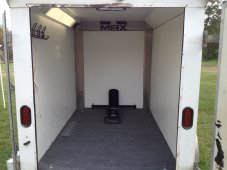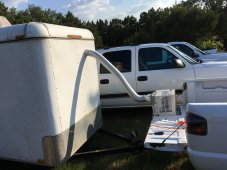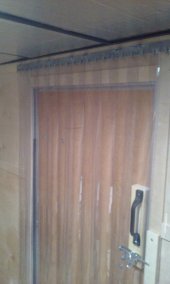Texas-Mark
Solar Addict
- Joined
- Aug 4, 2021
- Messages
- 1,405
I have a 12x6 cargo trailer conversion. It has powered roof vent and a side window. During the day when I am not using it, the powered roof vent runs when the internal temp reaches 95 degrees. Obviously it will never be cooler inside than the outside ambient temperature, but it is always 10-20 degrees hotter inside. With the window closed, it will be 20 degrees hotter even with the fan running since there is no fresh air intake. With the window open, it will still be 10 degrees hotter, but since the window is right next to the the ceiling vent, there is not really that much overall air flow other than in the window, and right out the vent,
I have a 5K BTU AC that i can remotely turn on, but the hotter it it is inside, the harder it is is to cool it down, and I have to fire it up a lot earlier if I plan to go out to it. Note: We have been having 100+ days for weeks now. I have panels on the roof that offer some shading and a sun screen shade on the West side that helps a little.
So my question is, has anyone installed a fresh air intake somewhere like in the floor, and did it help? I don't want to be making holes for just a degree or two difference.
I have a 5K BTU AC that i can remotely turn on, but the hotter it it is inside, the harder it is is to cool it down, and I have to fire it up a lot earlier if I plan to go out to it. Note: We have been having 100+ days for weeks now. I have panels on the roof that offer some shading and a sun screen shade on the West side that helps a little.
So my question is, has anyone installed a fresh air intake somewhere like in the floor, and did it help? I don't want to be making holes for just a degree or two difference.






